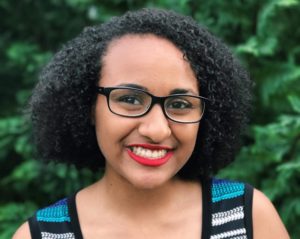Good Disability Policy is Good Environmental Policy
Apr 24, 2024
When was your first encounter with white supremacy?
I listened as other people of color shared their stories, but I found myself unable to say a word. As I sat there quietly, I tried to remember, my mind racing through deeply buried memories.
Was it when my white ethics professor in my first semester at Duke said n*gger multiple times for what he called keeping his class “historically accurate?” Could it have been in my junior year of high school when a friend defended the white supremacist rallies in Charlottesville as acts of free speech while, in the same breath, condemning Collin Kaepernick for taking a knee during the national anthem? Or was it in middle school when librarians would routinely kick out Black students waiting for their rides home?
No, as I thought harder, I realized that I couldn’t answer the question because for me there was not a first defining moment. Or maybe there was, and either I was too young then and hadn’t yet understood my racial identity and its full implications or I had suppressed whatever painful memory to cope with the trauma. As a Black girl, white supremacy was something ingrained in my childhood. White supremacy was the harsh and unprovoked looks my teachers would give me, the endless desire to burn my hair straight before school, the pressure to not be too loud and to speak and dress “properly” at all times. Growing up for anyone is difficult. The stress of school, the desire to fit in, the constant struggles for confidence. Growing up while Black is all of this while also learning to love yourself in a world that hates you.
Yes, white supremacy is systemic and rooted in the very foundation of this country. White supremacy shows up in our criminal injustice system, school systems, housing, health care, and the environment. It shows up in the wars and occupations in Black and Brown countries. But this violence is felt and experienced by human beings with bodies and minds who have been terrorized by these systems. Ta-Nehisi Coates says it best in his work Between the World and Me:
“But all our phrasing—race relations, racial chasm, racial justice, racial profiling, white privilege, even white supremacy—serves to obscure that racism is a visceral experience, that it dislodges brains, blocks airways, rips muscle, extracts organs, cracks bones, breaks teeth. You must never look away from this. You must always remember that the sociology, the history, the economics, the graphs, the charts, the regressions all land, with great violence, upon the body.”
Constantly experiencing and witnessing anti-Black death is a form of trauma, stress, and anxiety that stays in our bodies. The impacts of living in a white-supremacist state quite literally is passed on to our children and our children’s children.The ongoing movement against police and state-sanctioned anti-Black violence is a culmination of our generational resistance to white supremacy. This movement for us is about survival, and it is about healing. It is not a trend, aesthetic or fleeting hashtag. Whenever I see another uncensored video of a Black person killed by police, I see myself, my parents, my brothers, my sister, my friends, aunts, uncles, cousins. I see them, and—without ever meeting them—I know them.
As a Black woman who has been drawn into the environmental movement, I have been forced to confront the racist history of the mainstream, white-led environmental movement. These organizations–which remain at the forefront of the movement–were founded by white supremacists who spewed hateful and violent ideologies towards Black and Indigenous communities. They dismissed the work of Civil Rights Groups who tirelessly fought to advance racial justice in the environmental movement; instead, many leaders stood on the side of complicity regarding racial injustice. The legacy of the environmental and conservation movement continues to be seen in how white-led groups fail to fully show up for communities of color.
White supremacy is a source of pollution and is a toxin that controls every facet of our society. White supremacy is in the air we breathe and the water we drink. It is in our schools. It is in our streets, grocery stores, and neighborhoods. It is about police and prison violence. If we do not see all of this as part of our cause then we are being complicit to white supremacy.
We as an environmental movement must confront our silence and active role in furthering white supremacy. To do this, we must fundamentally reimagine what we see as environmental work. The environment is not simply the natural land and water we seek to protect. The environment is the very world we live in. This starts by supporting environmental justice groups that have long committed to doing this work on the local, state, national, and global level. White supremacy is what makes mainstream, white-led groups the face of environmental work. We must challenge these notions and uplift the work of organizers of color.
Fighting for environmental justice is about fighting for a safe and just world. Our movement needs to step up and actually commit to doing this work. If not, whose world are we even fighting to protect?